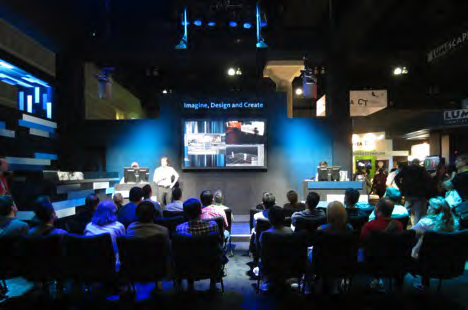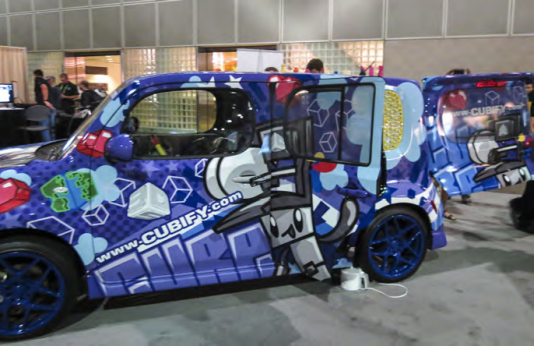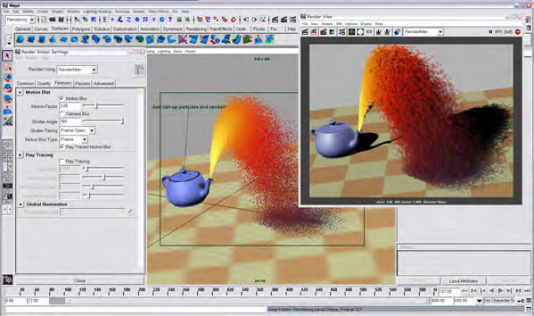A roundup of new technology from Siggraph 2012.
Not to sound too self-congratulatory, but the topic Jon Peddie Research chose for the Siggraph press lunch, “Doing more with multicore,” turned out to be particularly apt. (See “Multicore taking the film industry back to the future.”) So many of the newest breakthroughs have come as a result of the power of multicore architecture; in turn, multicore is finally being better exploited as new tools are rapidly being developed.

There was real optimism this year at Siggraph, and the cooperation we’ve seen growing throughout the creative industries was on display at Siggraph. Sure, companies will still take inordinate amounts of credit for technology breakthroughs, but Siggraph is a conference where scientists take the wraps off and show each other what they’re up to and how they did it. All it takes is spending a little time listening to the technical presentations. It’s striking how much is being developed through Open Source collaboration. To paraphrase Stewart Brand—who said information wants to be free—technology wants to be free too. (Unfortunately, the next corollary is lawyers want to be paid.)
It seems like it’s been years that we’ve talked about the graphics and design industries suffering through recessions. That’s because it really has been years. And what happens is that huge changes happen in production and business. We’re just now seeing those changes work through the entertainment, game development, and product manufacture industries, but it’s not as if anyone understands how it’s all going to work out in the end.
This year we were struck by the re-emergence of older technologies coming together with new approaches. Here’s a quick recap of what stood out at the show.
The return of the head mount: There were enough head mounts on display this year to bring back fond memories of 1988 and the early days of Virtual Reality. Canon brought a slick head mount display to enable people to explore digital environments for design. Canon also demo’d Augmented Reality applications with head mounts. Along those same lines, Epson brought along a pair of glasses, which the call Moverio. These were semi-transparent glasses so you could view digital content without completely blocking out your surroundings. It works. When I tried it, I had no trouble shifting my focus to the digital scene in front of me, but I was comfortably aware of my surroundings. Along those same lines, Christie showed off a CAVE system the size of a closet. No, it wasn’t a head mount, but it was pretty convenient.

Digital Reality: The ability to bring information into the real world and back out again is developing rapidly. At Siggraph 2012, Cubify brought its very-low-cost printers, and Objet brought its slightly more expensive printers. 3D3 offered to scan your face and send you your 3D-you. At the Foundry we heard about using 3D scans as backgrounds for content creation. French company Lumiscaphe demonstrated cloth simulation, which they achieved by scanning in materials and applying a displacement map to create a 3D effect.
Rendering: The number of ray-tracing companies is multiplying like rabbits. We have no idea how these sweet companies that arrive every year intend to survive, but their young entrepreneurs are indomitable. The newest companies are taking advantage of the GPU, and they’re trying all sorts of tricks to overcome the memory limitations of GPU rendering. Some of the companies with staying power include V-Ray from Chaos Group. They were in Nvidia’s booth taking advantage of the new Kepler-based Maximus systems. Caustic Graphics is a division of Imagination. The company is working on plug-ins for the major 3D vendors including Visualizer for 3ds Max and Maya and Neon for McNeel’s Rhino. Luxion’s edge is push-button ray tracing, and this year the company has added a tool to enable rendered 3D models in browsers called KeyShot VR. The new tool comes with an upgrade to KeyShot, and it works in browsers that support HTML5.
It just gets better
The enthusiastic embrace of Open Source software coupled with new powerful and inexpensive hardware platforms is pushing digital technologies further and faster than they have gone before. Open Source is taking over the role once held by proprietary software development jealously guarded within companies. That was a rigid and expensive approach. In contrast, shared development within the Open Source community enables companies to build their own tools but also lets the community improve those tools. It always was a crazy idea; we should have known all along it would work.

Software is going to get a lot better over the coming year. The tools for taking advantage of parallel processing, putting GPUs and CPUs to work cooperatively, are improving, and software developers are committing to them. At Siggraph this year many of the papers demonstrated the tools the studios have developed to push hardware acceleration. These tools start out as proprietary, but the studios are increasingly cooperating on the development side, and by the time it’s a paper at Siggraph, the software vendors are looking at ways to put them to work. That’s how we know to expect big things in the coming months.





